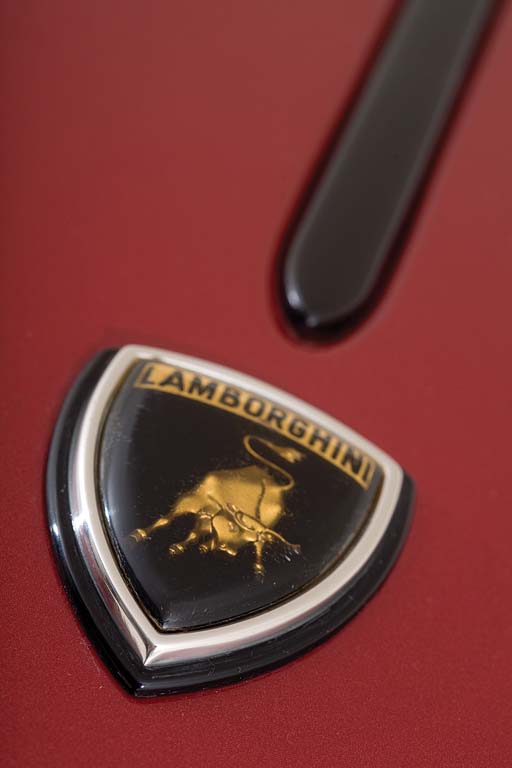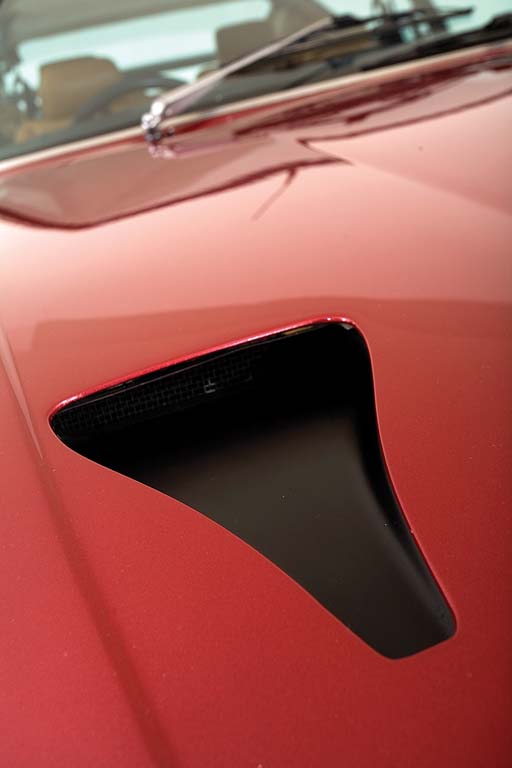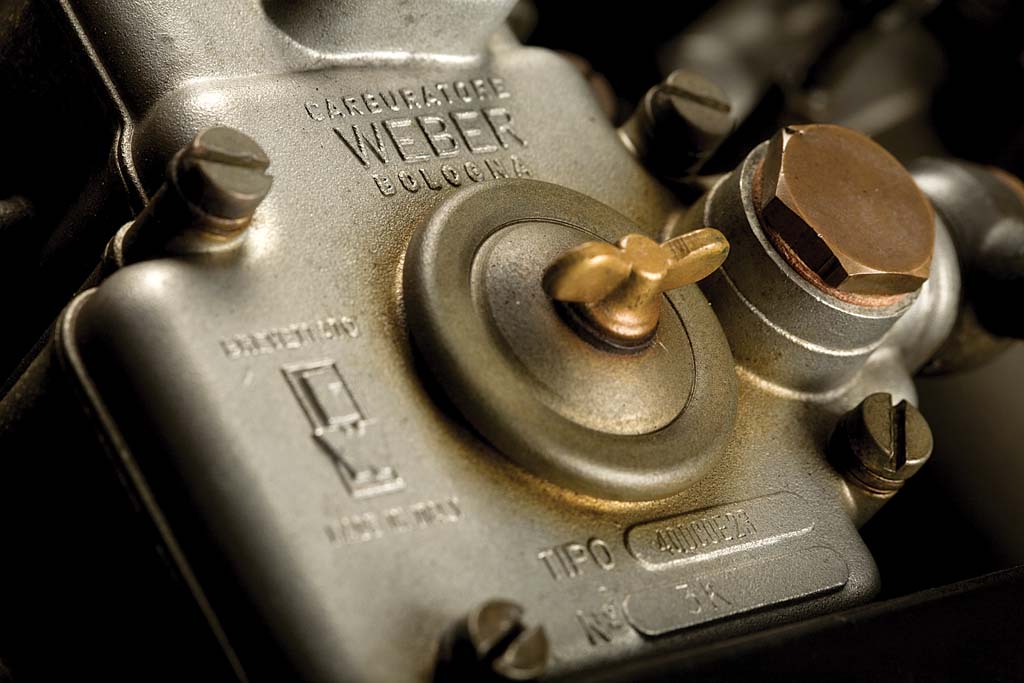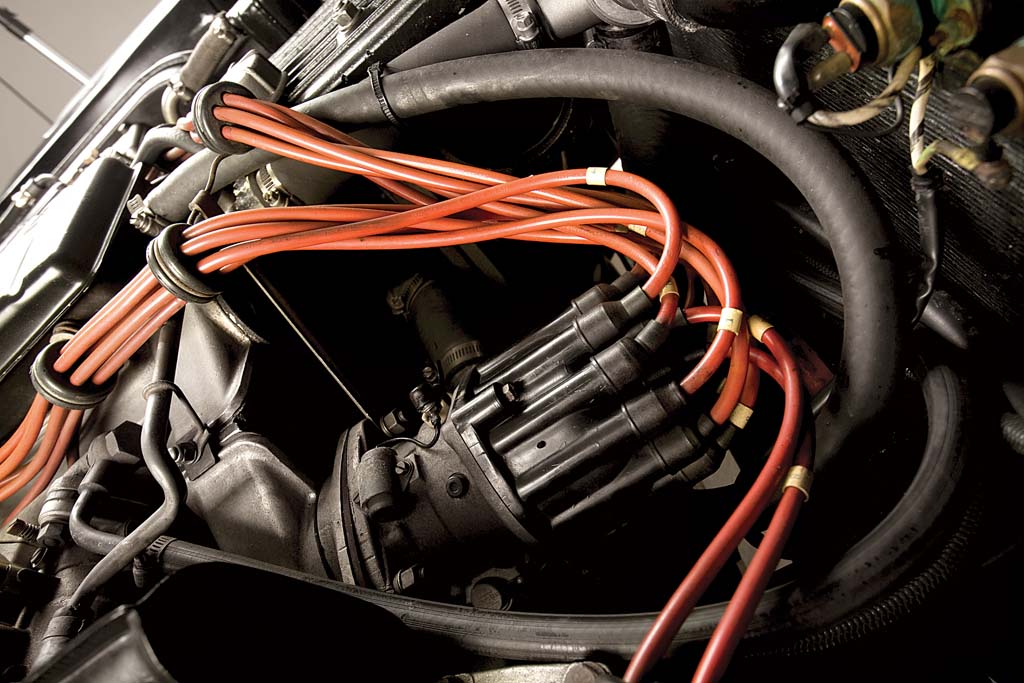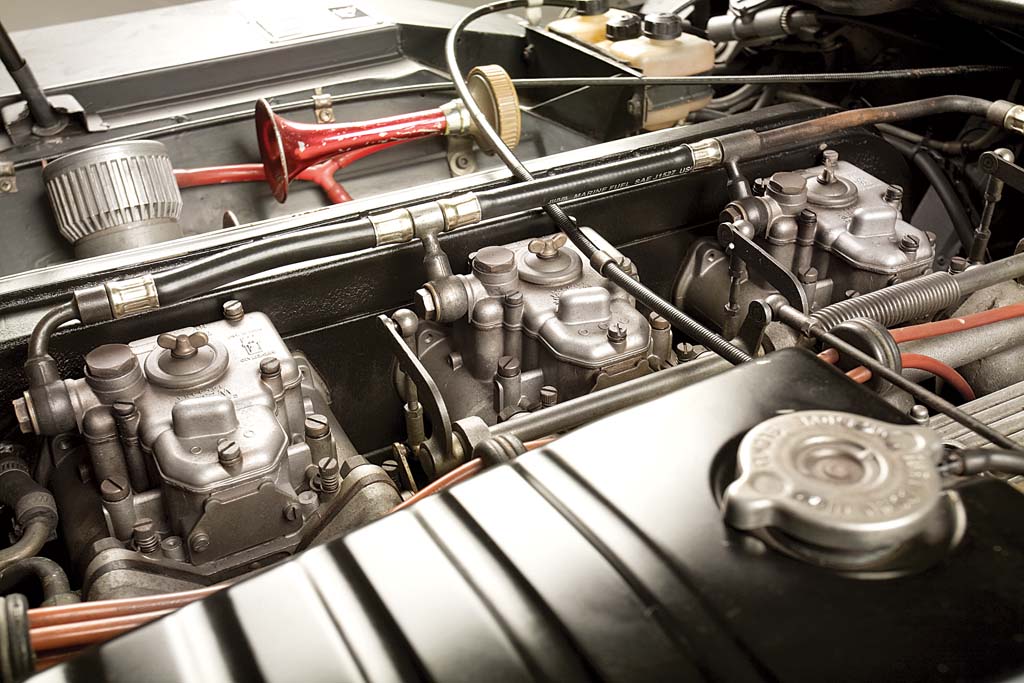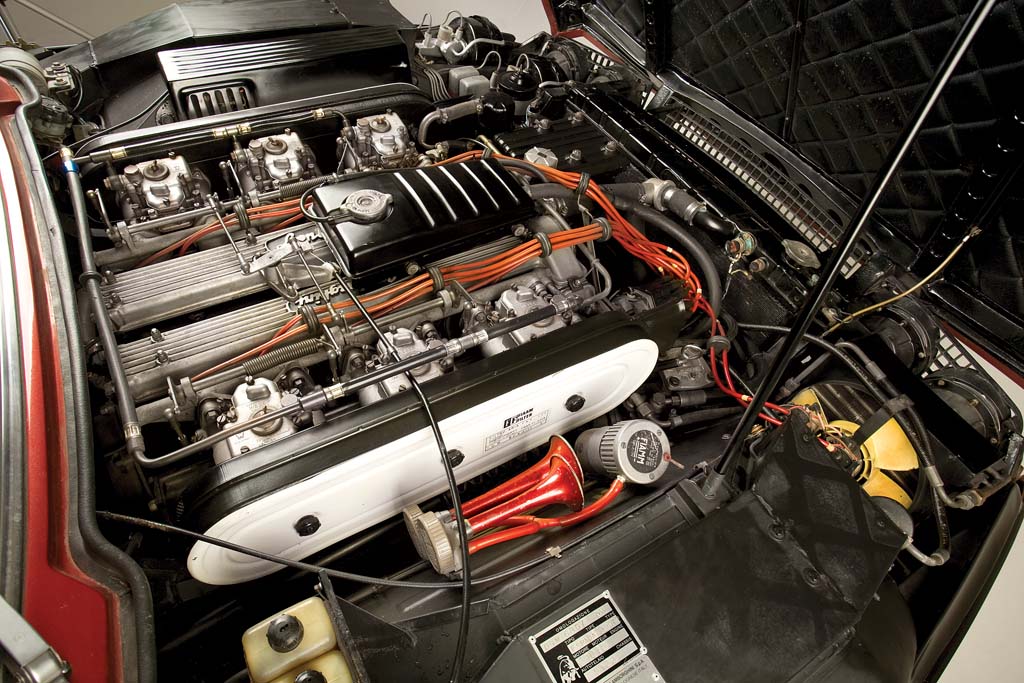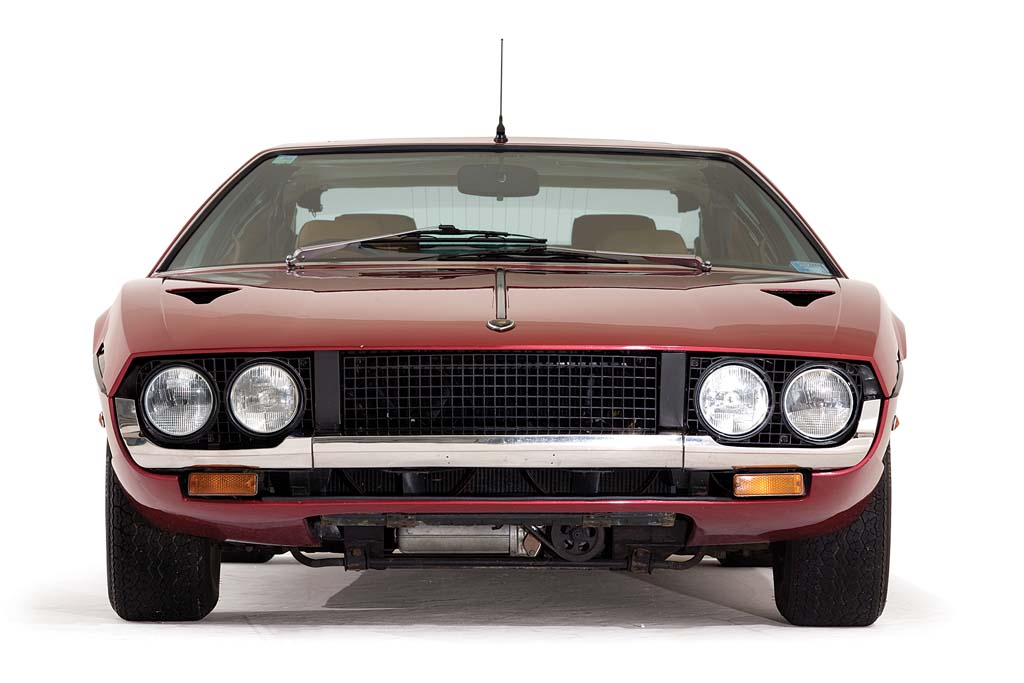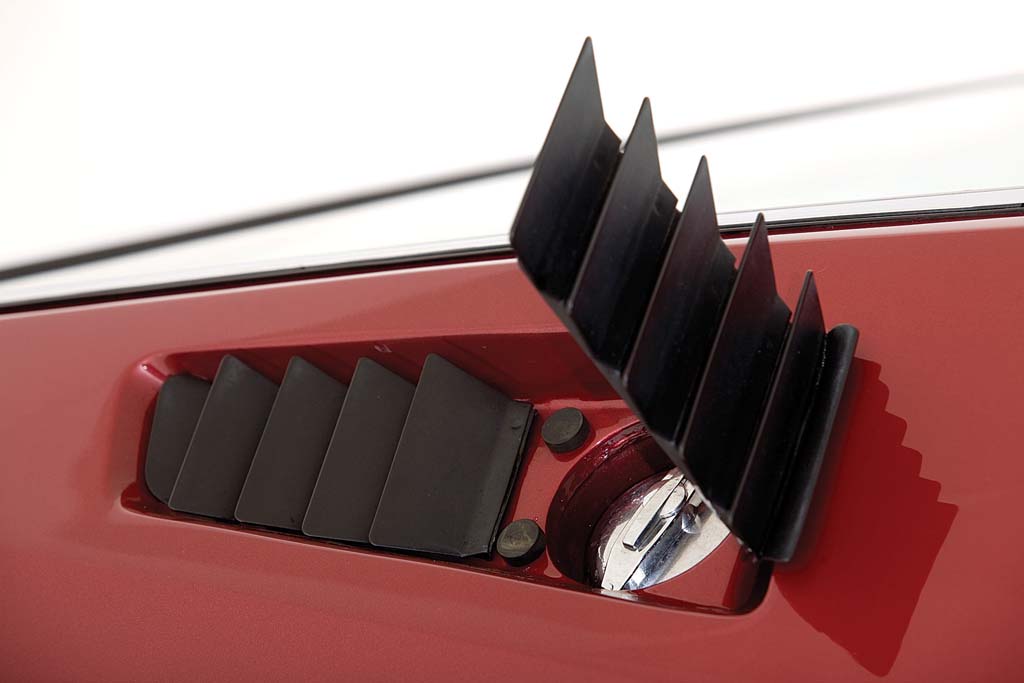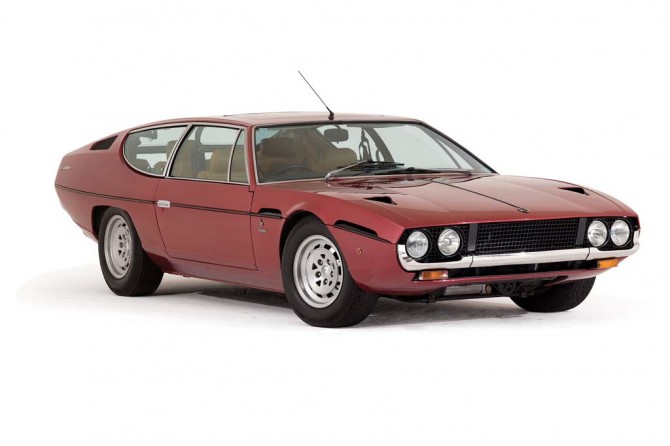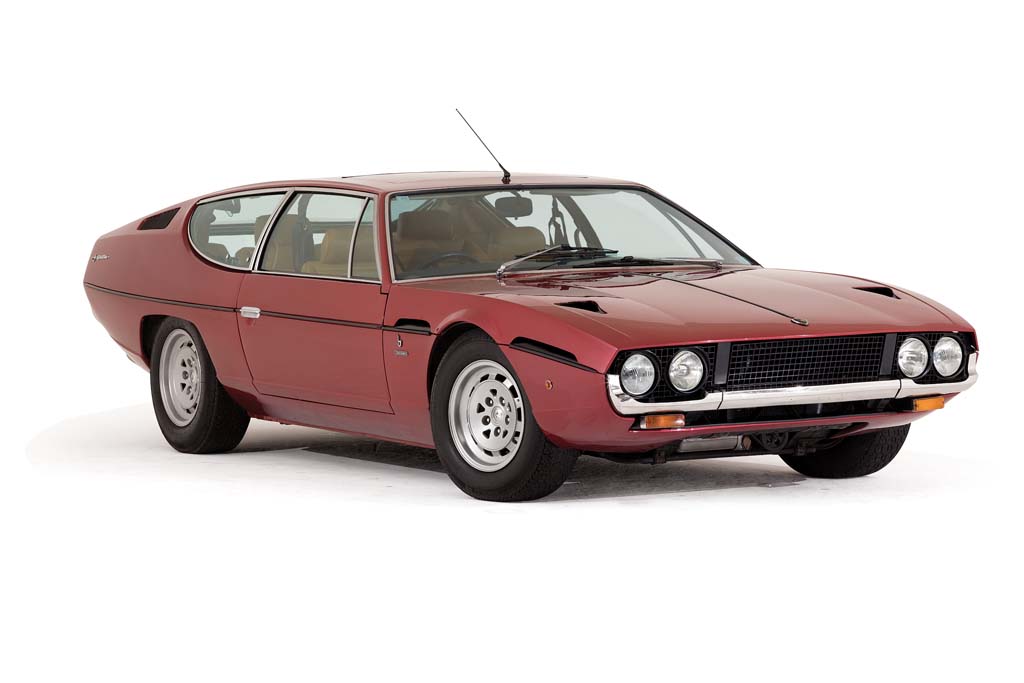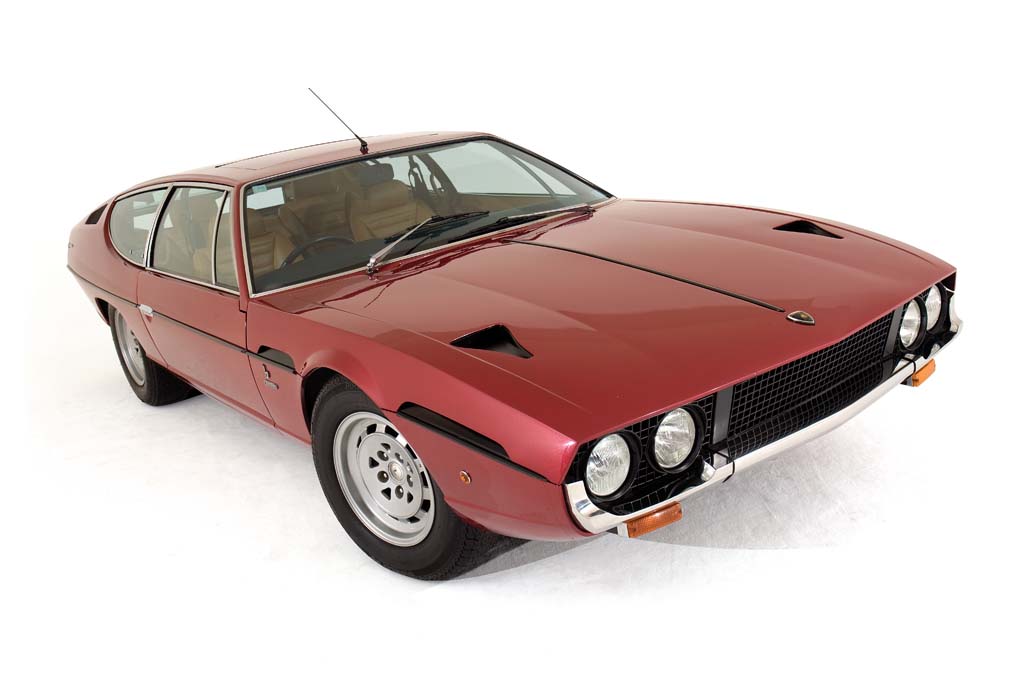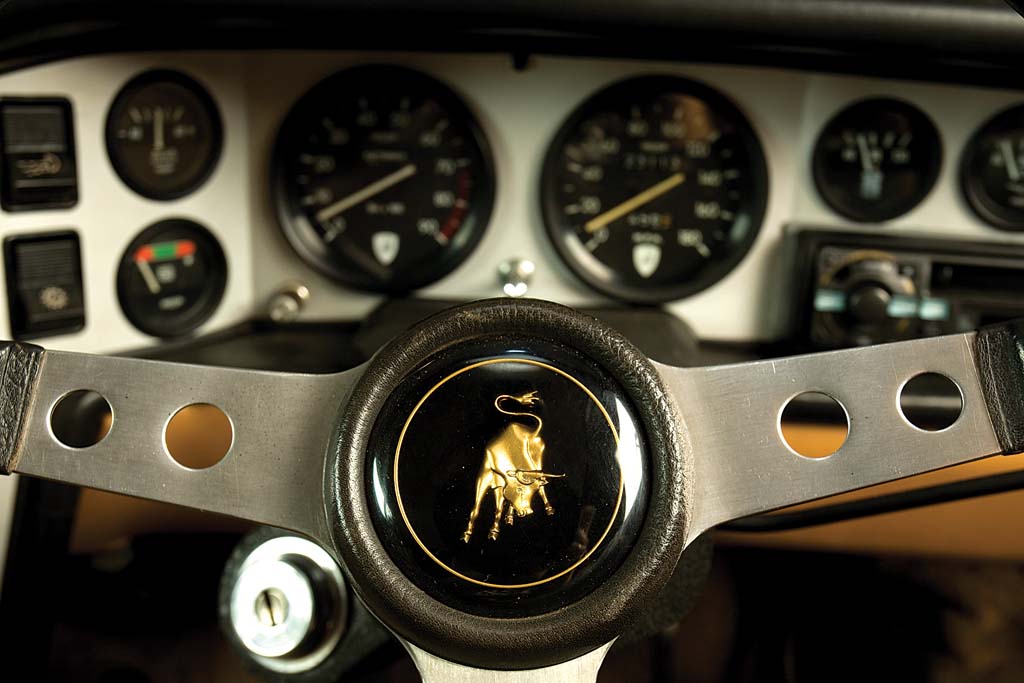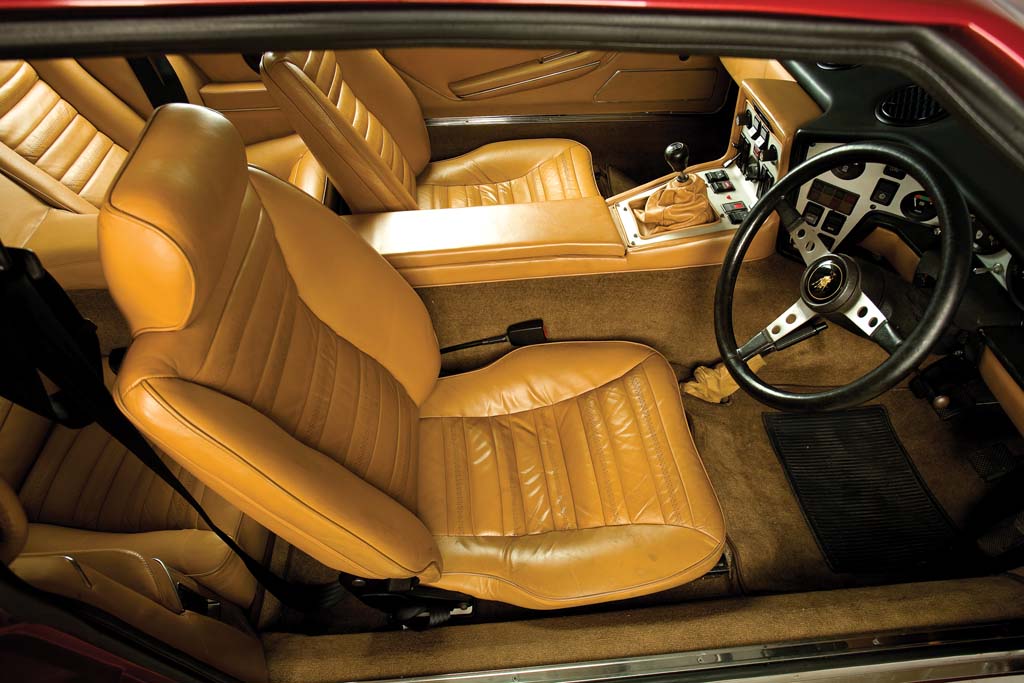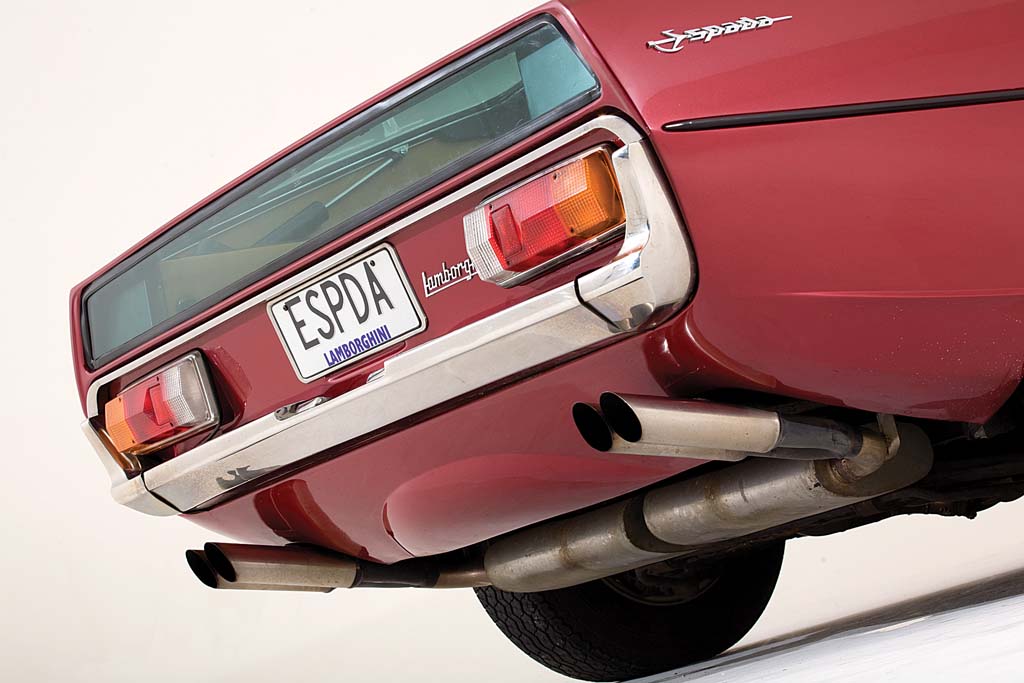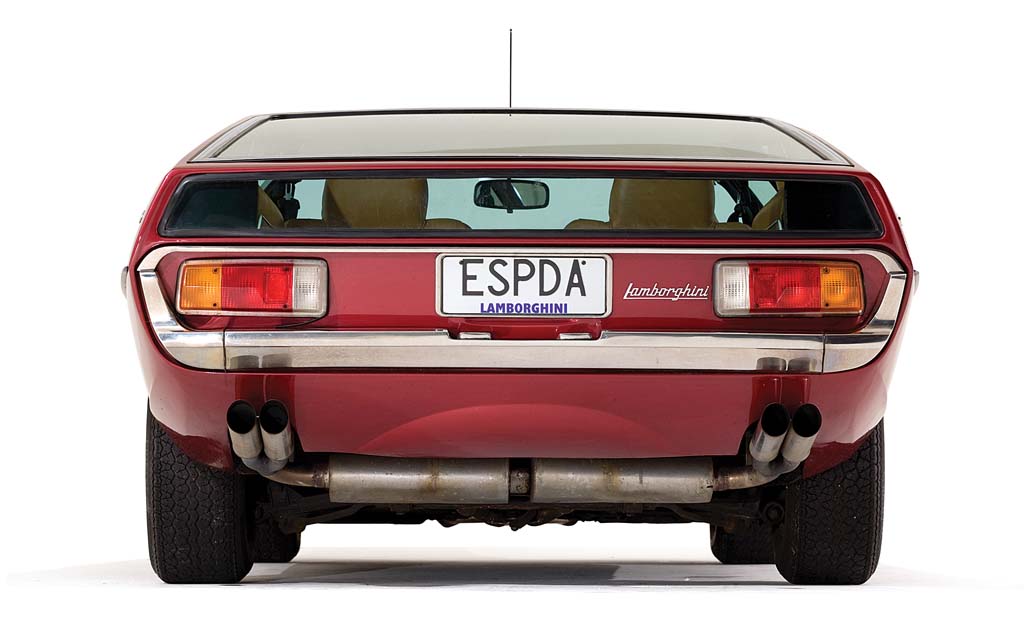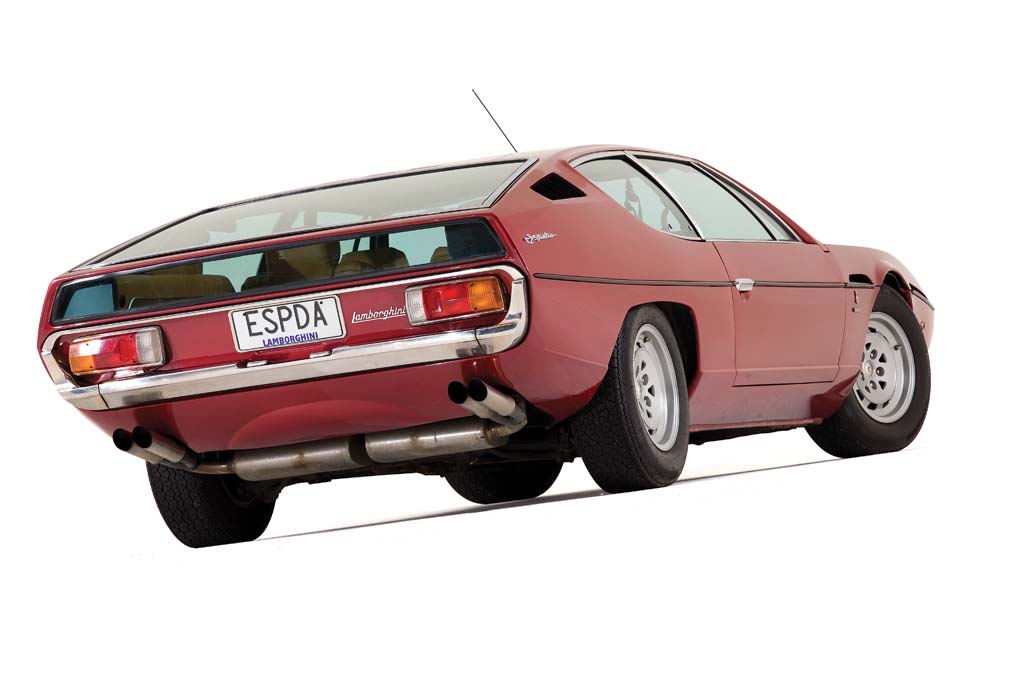
At the recent Paris Motor Show, Lamborghini surprised everyone by unveiling the four-seater¨Estoque — almost exactly 40 years after it introduced the Espada, its first four-seater GT
Fresh from the astonishing debut of the Miura in 1966, Ferruccio Lamborghini gave permission for his talented team to work up a genuine four-seater car.
Ferruccio’s brief was simple and to the point — “I want to build the Italian Rolls-Royce!”
In order to achieve his boss’ wish, Giampaulo Dallara, Lamborghini’s head engineer, started with a long wheelbase version of the Miura’s steel platform chassis. Dallara initially planned a mid-engined car — which would give him luggage space both front and rear — although mounting the Lamborghini V12 engine transversely, as in the Miura, was not an option as the engine was too large. Apparently rejecting a front engine placement, Dallara’s solution was to hack the Miura’s V12 in half to produce a 1964.5cc slant-six. This engine, he reasoned, could then be hung over the new car’s rear axle line. Dallara’s concept allowed the resulting car to be relatively compact, provided a four-seat cabin and ample luggage space.
With the engineering underpinnings resolved, Bertone’s Marcello Gandini — still in cloud cuckoo land after the praise heaped on him for penning the Miura’s beautiful body — was commissioned to fashion a body for the concept car. The final result, christened the Marzal, featured glassed-in gullwing doors, a glass roof and extensive use of hexagons as a styling device. If Gandini thought he had been successful in styling the Marzal, apparently Ferruccio Lamborghini did not — his main objections being based on the car’s glass-sided doors which, quite literally, would put drivers and passengers immodestly on view.
Despite his opinion of the Marzal, Lamborghini allowed the car to be paraded around the motor show circuit — a high point being when HRH Prince Rainier, accompanied by Princess Grace, used the Marzal to officially close the circuit for the 1967 Monaco Grand Prix. Oddly enough, despite his objections to the Marzal’s styling, the one-off concept car eventually found a place in Ferruccio’s private collection after he left the company he had originally founded.
The Jaguar Connection
With his design for the Marzal firmly rejected, Gandini was ordered to go back to his drawing board and come up with something more pleasing. While he was thinking about that problem, another commission came through the doors at Bertone. London’s Daily Telegraph wanted a special publicity car to promote its new weekend magazine, and was looking for a dramatic restyling of the dumpy, unloved Jaguar E-Type 2+2. Gandini got the job and came up with the Pirana, a sexy two-door coupe that bore more than a passing resemblance to the Marzal — although fitted with conventional rather than gullwing doors. The rebodied Jaguar was subsequently displayed at the 1967 London Motor Show.
Gandini now melded together his designs for the Marzal and the Pirana and came up with a dramatic, but much more conventional, four-seater GT design. Indeed, the connection between the two cars was so complete that the body buck built for the Pirana was pressed into service to form the proposed new Lamborghini. With a few minor design changes, Gandini’s second effort met the approval of Ferruccio Lamborghini.
Following on from the Pirana, Dallara tossed out his idea for a rear or midships-mounted engine (the slant-six idea was also ditched — 130kW (175bhp) was simply not enough power for a ‘proper’ Lamborghini) and the familiar 3.9-litre V12 was slotted longitudinally into the car’s nose.
Resplendent in a coat of metallic gold paint, the new Lamborghini, christened the Espada — named after a matador’s sword — was publicly unveiled at the 1968 Geneva Motor Show, where it attracted almost as much admiration as the Miura had received upon its debut.
The Espada would go on to become, at the time, Lamborghini’s numerically most successful car with 1217 examples built between 1968 and 1978. Many detail changes were made to the Espada during its long production run (see Espada Evolution) as Lamborghini continually updated its best-seller. Many believe that with further development the Espada could have remained in production even longer, but in 1978 outside influences scuppered Lamborghini’s four-seater supercar.
Although sales had tapered off by 1978, the main reason behind the Espada’s demise was not related to the car itself but to Lamborghini’s overall position.
Lamborghini’s founder had already parted ways and the Italian courts had take over the cash-strapped company. With little money to pay creditors, outside suppliers had to be cut down to a minimum. The Espada — its Bertone-built bodywork mounted atop Lamborghini-supplied chassis at Grugliasco near Turin — would be the first casualty. For Lamborghini it made much more sense to concentrate on the Countach — with a body built in-house — than to rack up further expenses with an outside body-builder. As a result, the Espada was probably killed off before its time.
However, the concept of a four-seater Lamborghini would surface again in 1987 after Chrysler acquired the still ailing Italian company. The previous year Chrysler stylist, Kevin Verduyn, had come up with a interesting design proposal he had dubbed the Navajo. At the time, Verduyn’s proposal had attracted little interest but, with Chrysler’s buy-out of Lamborghini, the year-old design was dusted off.
With further refinement, a running steel and plastic Navajo — now sitting atop a lengthened Lamborghini Jalpa chassis — was built up by Coggiola of Turin. Renamed the Portofino, the revised concept car featured four, scissor-type doors redolent of the Countach, and seated four adults. Interestingly, the Portofino featured a revised Lamborghini badge, depicting the traditional bull penned in by Chrysler’s pentastar — a logo that would, like the Portofino, remain a one-off.
It appeared that the idea of a four-seat Lamborghini died with the Portofino but then, earlier this year, Lamborghini unveiled the Estoque — a four-seat supercar powered by Lamborghini’s existing V10 engine. As a fitting salute to the classic Espada, the Estoque name is derived from the 89cm sword used by matadors too.
The wheel, it seems, has come full circle.
On the Road
Climb into the driver’s seat of the Espada’s leather-lined cockpit and the first thing you’ll notice is that the passenger’s door seems a long way away — this is a wide car even by modern standards. Ahead of you, the Espada’s instrument panel is awash with gauges and rocker switches, all set within a brushed aluminium panel. It doesn’t exhibit particularly good ergonomics — the radio is mounted just above your right knee — but the main instruments are clearly visible through the three-spoked steering wheel. Thankfully, our featured Espada doesn’t come with the earlier, bizarre dashboard left over from Gandini’s hexagon fetish.
When you twist the ignition key it’s not really a question of simply starting the V12 — it’s much more like awakening a savage beast. To be sure, in the Espada the V12 feels rather more civilised than it does in the Miura, but the animal sense remains as the engine settles down at idling speed — all gnashing teeth and swishing chains.
As you pull away, you quickly note the lengthy accelerator travel — it seems to go down infinitely and, once at speed, there’s a discernible point in the accelerator pedal’s travel when the second stage of the Webers come on song. Press the pedal beyond that point and the wail of the V12 will raise the hairs on your head and send a wave of goose pimples down your arms — it really does sound than good.
Any initial trepidation about lunging such as wide car down narrow Kiwi roads soon disappears, and the Espada proves itself to be surprisingly nimble. Ambling along,
it displays a tendency towards mild understeer, making for fail-safe handling at moderate speeds. As the pace increases, like many ’70s supercars, the Espada is let down by its tall 70-profile tyres — which allow it to fidget around at high speeds as it displays a certain amount of nervousness.
However, the tyres still have loads of grip so cornering is precise and tidy. Up the ante and the Espada’s handling characteristics begin the change. If you ease off the gas as you boot the Lamborghini hard into a corner you can feel the beginnings of oversteer as the tail begins to slide outwards. This movement is easily predictable, allowing you to control the outwards drift directly from the accelerator.
Try even harder and the Espada’s owner tells me you can hold a full-blooded power-slide as you exit a corner. I deferred to him on that point, not being willing to try that manoeuvre out for myself!
In short, the Espada is rather more than the sum of its parts — it can be pressed into service as a comfortable long distance tourer for four, yet it is equally at home in the role of a genuine sports car when driven by a skilled and enthusiastic driver. With that in mind, even after only a short drive, it was easy to see the appeal of the Espada — in its day it was totally unique and, Estoque not withstanding, we’ll probably never see its like ever again.
Kiwi Espada
Our featured Espada — an early Series 3 model — was imported into New Zealand from the UK in late 1974, and first registered here in January 1975 with only a minimal distance on the clock. Over the ’80s the car had a succession of owners and, at some point, it appears the Espada was raced at club events. Although it spent most of this time resident in the North Island, it also did a stint in the South Island.
History is a little sketchy on these early owners, but the sixth owner, a Wellington-based entrepreneur, would eventually lose ownership of the Espada to a finance company after overstretching himself during the economic woes of the late ’80s — the Lamborghini being taken as security on an unpaid debt. During this period, it appears that it was raced at club events — which resulted in some damage.
By 1994, the car was in the hands of a new owner, who commissioned Wellington continental car expert mechanic and restorer, Tony Hall of Eurotec, to undertake a comprehensive bare metal restoration. Prior to this, the Lamborghini’s V12 engine was totally rebuilt, with the restoration project beginning in earnest the following year. The car’s body and frame were taken right back to bare metal and, using laser technology via the local polytechnic, all vital measurements were verified in order to maintain the car’s original integrity. The two-year restoration, as well as a complete repaint, also included a full interior retrim and mechanical rebuilds of the gearbox and suspension.
When the Lamborghini eventually re-emerged from Eurotec, it was close to perfect — however, it remained unused as the owner relocated to Novia Scotia, Canada.
It was at this stage that the eighth and current owner, Mike Lowe, became aware of the car, and he purchased it in 2007. Since then, Mike has completely overhauled the Espada’s braking system, and the car’s odometer still only shows 23,000 miles (37,015km).
Mike and his Espada
Mike is probably best known to NZCC readers for his Targa exploits in a tiny Fiat Abarth Berlina Corsa and, over the years, it has always been a source of wonderment that he is able to fold up his 1.8-metre-plus frame into the miniscule Italian car.
Less well known is Mike’s abiding passion for all Italian cars — he has been restoring a Fiat Dino Spyder for as long as we care to remember — and even his son, Scott, has caught the Italian bug from his father and drives a restored Fiat 124 coupe.
In order to get to our photo shoot, Mike elected to drive the Espada up from his Rotorua home to Auckland — he had briefly pondered trailering it up, but the opportunity to drive the Lamborghini proved too much of a temptation.
“I really enjoyed the drive up to Auckland,” Mike said. “Unlike others who own exotic cars, mine do get used — yes, even in pouring rain! The highlight of the trip home was passing a group of trucks in third gear at 7500rpm. The noise — oh my goodness, the noise! Just like three Abarths — which I guess it is! I can only imagine how these cars must have felt back in 1968 when they were first released to an unsuspecting public — a true supercar to be sure.”
Mike was clearly getting into his stride as he described the trip from Rotorua to Auckland.
“Driving the Espada is a fabulous experience. Only the tyres (tall 70-profile rubber) give the game away with a nervous disposition at speed. The rest of the car handles as if it’s on rails, and it is rock steady over our roads. The power and smooth torque of the V12 makes gear changes somewhat redundant if you are in cruise mode — but if you want some fun, just change down to third! And the best part is that you can take three friends and all their luggage with you — unlike today’s pretend four-seater supercars.
“However, the most amazing part of driving this car is the looks it gets. No-one under the age of 40 knows what it is, and to see such a low, wide car in these days of pedestrian safety (high bonnets, airbags and thick pillars), the Espada has a style that we’ll probably never see again.”
Currently, there are six Lamborghini Espadas in New Zealand, although only three are registered and on the road. Arguably, Mike’s example is one of the best, if not the best, low mileage Espada anywhere in the world — and it’s for sale.
Yes, sadly Mike is prepared to part with his Espada — especially as he only recently bought himself a new toy. Italian, of course — to be precise, the gorgeous giallo fly Ferrari 308GTB featured in our November 2007 edition.
So, if you’re interested in owning a genuine four-seater supercar, and can’t quite run to a brand new Estoque (if, indeed, it ever becomes a production reality) check the cars for sale pages in the January edition of NZCC.
Words Allan Walton, Photos by Dan Wakelin
1974 Lamborghini Espada
Engine: All-alloy 60-degree V12
Capacity: 3929cc
Bore/ stroke: 82 x 62mm
Comp ratio: 9.5:1
Valves: dohc per bank
Max power: 261kW (350bhp) at 6500rpm
Max torque: 391Nm (289lb/ft) at 5500rpm
Fuel system: Six Weber twin choke 40DCOE 20
Transmission: Five-speed manual
Suspension (F/R): ¨Independent by coil springs and unequal length wishbones, combined spring/damper units, anti-roll bar
Steering: Worm and cam, PAS
Brakes: Disc/disc
Dimensions:
Wheelbase: 2600mm
Overall length: 4670mm
Width: 1820mm
Height: 1190mm
Track F/R: 1490mm
Weight: 1480kg
Performance:
Top Speed: 254kph (158mph)
0-60mph: 6.5 seconds
0-100mph: 15.8seconds
Production: 1968-’78 1217
Delving into the Espada’s PartsBin
Like many exotic Italian cars of the ’60s and ’70s, many of the Espda’s parts were sourced from rather less exotic vehicles.
As an example, the Espada uses Fiat 125 door handles, Fiat 124 bonnet catches, head-lights, horn and glovebox locks. The car’s seats, door panels, switch gear and window winder motors all come from the Fiat Dino; while the windscreen wipers were sourced from the Fiat 130. Fiat Crusader brake and clutch reservoirs are fitted, and Alfa Romeo supplied the Espada’s front indicators, taillights and rear hatch release.
Espada Evolution
1968: Espada 400GT unveiled to the public at Geneva Motor Show in spring, with first production cars available by late summer.
1969: Early production changes included a modified floorpan for increased rear head-room, opening front quarter-lights became fixed, grille below rear scree
n deleted.
1970: Espada 400GTE (effectively a Series 2 model) appeared at Brussels Motor Show. Changes included revised instrument panel, improved rear ventilation and a new, illuminated centre arm rest. Technical improvements included ventilated disc brakes all round to replace original solid rotors, Lobro CV joints for new half-shafts and optional power steering. High compression Islero/ Miura S V12 adopted, with 19kW (25bhp) increase in power to 261kW (350bhp). A later running change saw the original Miura-style centre-lock alloy wheels replaced by more subtle five-bolt rims.
1973: Revised Espada (retrospectively called Series 3) debuted at the 1973 Turin Motor Show. This version identifiable via mildly restyled nose and tail-lamps. Improved ZF power steering and air conditioning now standard fitment while a sunroof became an optional extra. Spring and shock rates altered, and rear suspension arms lengthened. Upgraded brakes also fitted as was restyled instrument panel. Automatic transmission (Chrysler’s three-speed TorqueFlite) became available from March 1974. ¨US versions with desmogged engines became available, complete with ugly ‘safety’ bumpers. These bumpers standardised on European Espada from 1976.
1978: Espada production discontinued.
Words: Allan Walton Photos: Dan Wakelin


